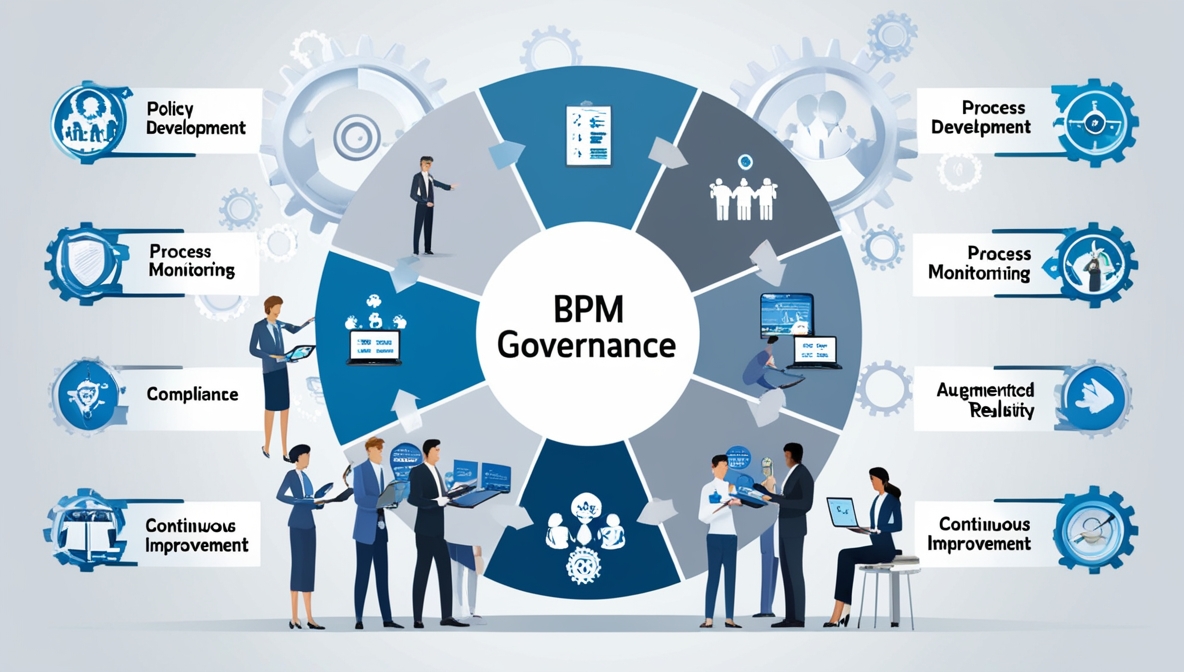Business Process Management (BPM) is a systematic approach to making an organization's workflow more effective, efficient, and capable of adapting to an ever-changing environment. It involves analyzing, designing, implementing, monitoring, and modifying business processes to achieve consistent, targeted results aligned with an organization’s strategic goals. Organizations use BPM to improve end-to-end business processes across various departments and systems, leveraging technology and methodologies to manage and optimize these processes.
The importance of BPM for organizations cannot be overstated. It enables businesses to align their operations with clients' needs more closely, enhancing customer satisfaction and retention. BPM helps reduce inefficiencies, manage data flow, and facilitate compliance with regulations. It also aids in fostering innovation by enabling organizations to be more responsive to emerging trends and changes in the marketplace. Organizations can reduce costs through BPM while improving service delivery and performance, increasing organizational agility and effectiveness.
To fully realize these benefits, BPM must be governed properly, necessitating BPM governance. BPM governance ensures that all business processes are aligned with the organization's goals and are consistent across various departments and teams. It establishes a standardized approach for managing and executing BPM initiatives, which includes setting guidelines, policies, and procedures to maintain oversight and control. Effective BPM governance prevents process discrepancies, ensures compliance, manages risks associated with process changes, and upholds the integrity of process management efforts. This oversight is crucial for sustaining long-term strategic alignment and operational excellence in BPM practices.
However, many organizations face significant challenges in implementing BPM governance due to a lack of clear standards, inconsistent practices across departments, and the absence of a unified approach. This often results in misaligned business processes that can detract from operational efficiency and strategic goals. Without a solid governance framework, BPM initiatives can lead to fragmented processes, redundant efforts, and wasted resources.
The absence of effective BPM governance can escalate these issues, causing frustration among stakeholders and potentially leading to costly missteps and missed opportunities. Organizations might struggle to see the return on investment from their BPM initiatives as disjointed processes fail to meet business needs or adapt to changing market conditions. This can create a cycle of inefficiency that hampers growth and innovation.
This guide addresses these challenges by presenting a comprehensive framework for BPM governance that includes establishing clear governance policies, aligning BPM with organizational goals, and integrating BPM governance across all levels of the organization. It provides practical steps for setting up governance bodies, defining roles and responsibilities, and implementing governance practices that ensure consistency and compliance across all business processes.
Main Contents
- Introduction to BPM and Its Importance - Outlines the basic concepts of Business Process Management and explains why it is crucial for organizational success.
- Governance Frameworks and Models - Details the various frameworks and models that can be applied to establish effective BPM governance within an organization.
- Roles and Responsibilities - Defines the roles and responsibilities of different stakeholders involved in BPM, ensuring clarity and accountability in process management.
- Implementation Strategies - Provides strategies and best practices for implementing BPM governance, including step-by-step guidance on establishing governance bodies.
- Monitoring and Continuous Improvement - Discusses methods for monitoring BPM processes and frameworks for ongoing evaluation and improvement to maintain alignment with organizational goals.
Key Takeaways
- Strategic Alignment is Crucial - BPM must be aligned with the organization's strategic goals to ensure that process improvements contribute to the business's overall success.
- Standardization Enhances Efficiency - Establishing standardized processes for BPM governance helps reduce redundancy and confusion, thereby increasing operational efficiency.
- Clear Roles Enhance Accountability - Defining roles and responsibilities within BPM governance frameworks is essential for maintaining accountability and ensuring effective process management.
- Ongoing Monitoring is Essential - Continuous monitoring and improvement of BPM practices are vital for adapting to changes in the business environment and technological advancements.
- Stakeholder Involvement is Key - Active involvement of stakeholders in the BPM process ensures that the governance framework is comprehensive and inclusive, fostering better acceptance and implementation.
This BPM governance guide is a crucial tool for CIOs and IT leaders looking to streamline and enhance their business process management practices. The guide provides a structured approach to BPM governance, essential for aligning IT operations with business strategies and achieving operational excellence. IT leaders can address various organizational challenges by leveraging the insights and frameworks presented in this guide.
Strategic Alignment of IT and Business Goals: This guide helps CIOs ensure that BPM initiatives align perfectly with the business's strategic objectives, facilitating better resource allocation and goal achievement.
Standardization of BPM Practices: By adopting the standardized governance practices outlined in this guide, IT leaders can minimize inconsistencies across different departments and teams, leading to more streamlined operations and reduced operational costs.
Enhanced Accountability and Role Clarity: The guide describes roles and responsibilities within BPM governance. This clarity helps reduce overlaps and gaps in responsibilities, ensuring that each team member knows exactly what is expected of them.
Risk Management and Compliance: With the frameworks and policies detailed in this guide, CIOs can better manage risks associated with BPM and ensure compliance with internal and external regulations, thus safeguarding the organization against potential legal and financial penalties.
Continuous Improvement and Innovation: The guide emphasizes the importance of continuously monitoring and improving BPM practices. This focus helps CIOs keep their BPM strategies agile and responsive to new challenges and opportunities, fostering an environment of continuous innovation.

